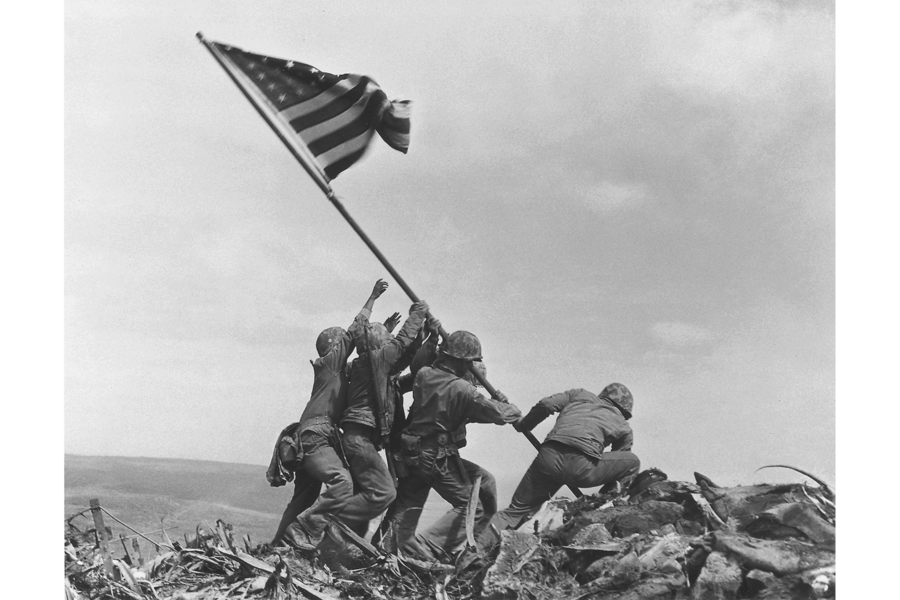Iwo Jima flag raising: Curious historians prompt Marine Corps investigation
Loading...
The Marine Corps has launched an inquiry into whether it misidentified one of the six men shown raising an American flag on the top of Mount Suribachi on Iwo Jima in February 1945, a year after historians raised doubts about the identity of the man.
The picture taken by Associated Press photographer Joe Rosenthal, has been accepted for decades, and remained as one of the quintessential snapshots of World War II.
However, in 2014, historians including Eric Krelle, of Omaha, Neb., and Stephen Foley, of Wexford, Ireland, began raising doubts about the picture. In November of the same year, the Omaha World-Herald published a report with their queries.
Mr. Foley picked up on the initial discrepancies and later enlisted the help of Mr. Krelle, who maintains a website dedicated to the Marines' 5th Division. A comparison of the photo with other images taken that day led the historians to speculate that the man identified as Bradley was actually Harold Henry Schultz, a private first class who died in 1995.
"The Marine Corps is examining information provided by a private organization related (to) Joe Rosenthal's Associated Press photograph of the second flag raising on Iwo Jima” said a Marine’s statement issued Monday
Mr. "Rosenthal's photo captured a single moment in the 36-day battle during which more than 6,500 US servicemen made the ultimate sacrifice for our Nation and it is representative of the more than 70,000 US Marines, Sailors, Soldiers and Coast Guardsmen that took part in the battle,” the statement continued. “We are humbled by the service and sacrifice of all who fought on Iwo Jima."
The battle of Iwo Jima began on Feb. 19, 1945, and went on for more than five weeks, as 70,000 marines and 18,000 Japanese soldiers fought for control of the tiny island, which was deemed essential to the United States as a landing site for American bombers. Nearly 7,000 US troops died in the battle, and another 20,000 were wounded.
Rosenthal snapped the photo on Feb 23, 1945, during second time the flag was raised that day. He could not identify the men immediately after, but the Marines later identified the men as five marines; Rene Gagnon, Ira Hayes, Harlon Block, Michael Strank, and Franklin Sousley, and a Navy corpsman identified as John Bradley. Block, Strank, and Sousley died in the battle, before the picture was distributed in the US.
Hal Buell, a retired AP executive news photo editor had discussed the famous picture with Rosenthal, and later wrote a book about it in 2006. Mr. Buell said that Rosenthal didn’t get a chance to ask the men their names, as they had been busy with other tasks.
Bradley's son, James Bradley, also wrote a best-selling book about the flag raisers, titled "Flags of Our Fathers," which was later made into a movie directed by Clint Eastwood.
"This is unbelievable," Mr. Bradley told the Associated Press, adding that he was shocked the Marines were investigating the identity of the men.
"I'm interested in facts and truths, so that's fine, but I don't know what's happening," he said.
This report contains materials from the Associated Press.






